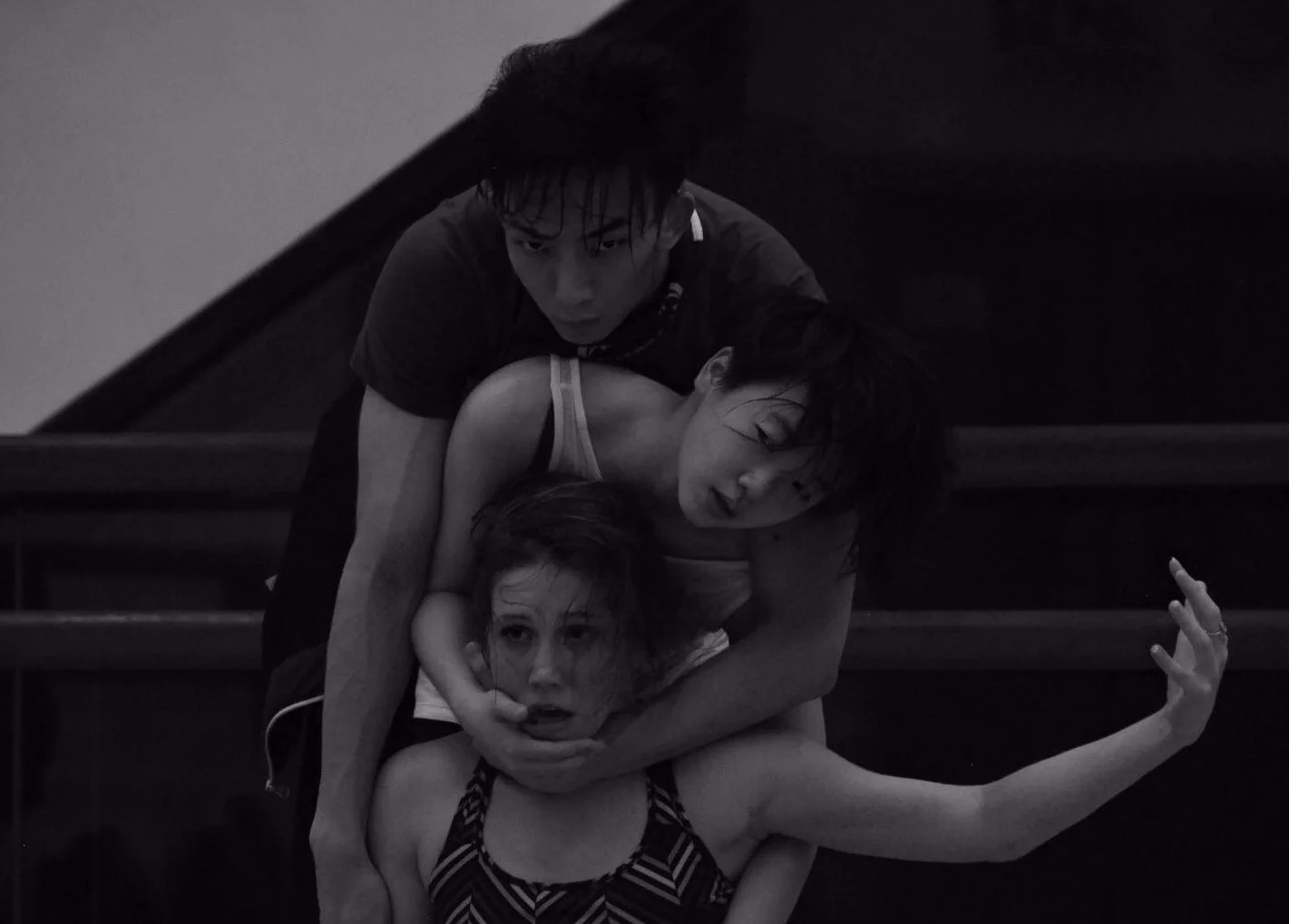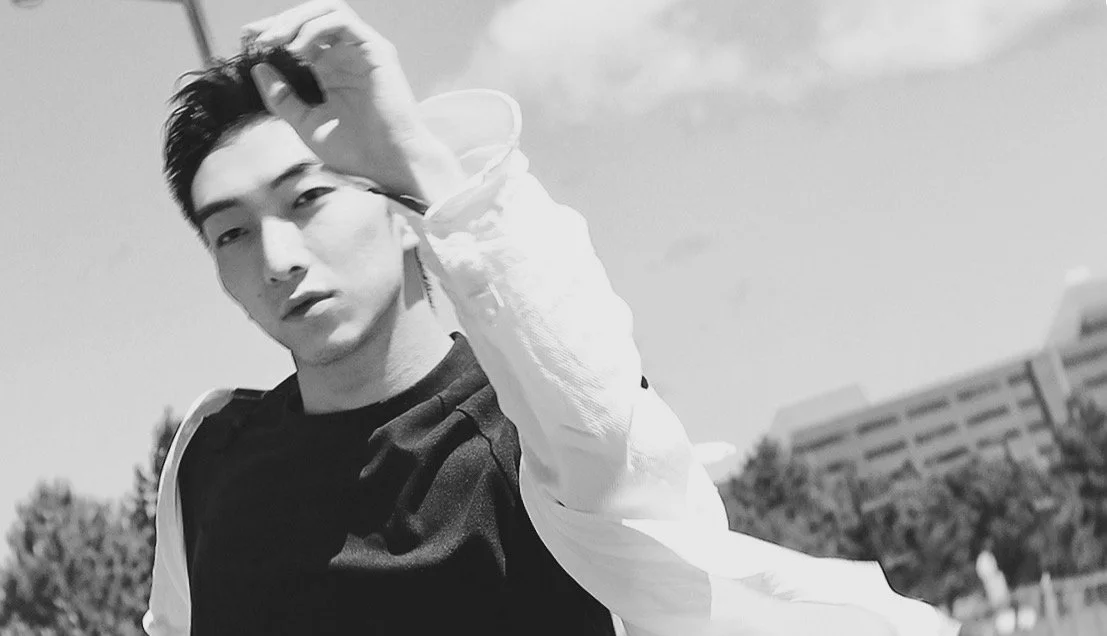AURUM x Yvens Yao Wei - Part II
"Beyond the Performance: Yvens Yao Wei on Culture, Collaboration, and the Craft of Dance"
In Part 2: Professional Perspectives & Cultural Insights, Yvens shares his views on the transformative power of community learning, using the body as a tool for enriched communication and the new, fresh perspectives that can grow out of integrating a practice of cultural continuity.
November 3 2023 - By Lisja Tërshana
Part II: Professional Perspectives & Cultural Insights
Lisja Tërshana (LT): You are a professional dance performer, choreographer, and educator. Can you tell us why you have chosen to emphasise your practice in education and what value or belief drove you for each role?
Yvens Yao Wei (YYW): They represent different stages of my life and meanings to me. While still a performer, I wanted to become a professional dancer to work with various choreographers and companies worldwide. I love connecting with people, sharing my ideas, and collaborating. The body has become my most familiar communication tool. It is simple and desirable to me. Working as a choreographer provided me with a unique deep perspective on dance; what attracts me is not only the design of dance movements, but also the opportunity to express my voice, aesthetics, and creativity through dance works. I regard every new creation as a rethinking process of myself. I hope to share my understanding of the world and my own artistic philosophy with the audience through dance works.
Its power has always fascinated me. In recent years, as a teacher and curriculum designer, I have been actively engaged in dance teaching and promotion in formal educational institutions and communities. I believe it's crucial that a teacher believes in the transformative power of education and the ability to empower students to reach their potential. It's truly significant for me. Furthermore, lifelong learning is necessary, you need to always have an insight into the development trend of the entire art industry, which drives me to update myself constantly.
LT: You’ve also taught improvisation dance to students with visual impairments and Parkinson’s disease. Would you say they approach improvisation differently from abled students? What challenges arise, and does this experience penetrate other aspects of your life, teaching methodology, or choreography process?
YYW: It all started two years ago when a friend introduced me to a student with vision impairments looking for a contemporary dance teacher. That was a starting point. It expanded from one student to 23 students in two years, which drove me to focus on the research of community art education until now. I am committed to introducing dance and its functions and value to more people, investigating the dance improvisation teaching methods and strategies applicable to those without dance experience, people with visual and hearing impairments, Parkinson's patients, and those with special needs. I am deeply passionate about ensuring that individuals with special needs have the opportunity to learn and experience the joy of dance. It is my vision that every person, regardless of their abilities, should have access to the transformative power of dance as a form of self-expression, physical activity, and emotional well-being. Through inclusive dance programs and dedicated support, I aspire to make this vision a reality, fostering a more inclusive and diverse dance community where everyone can thrive.
LT: How does dance practice challenge and expand our physical capabilities, and how do you handle different views on body image within the dance community?
YYW: We need to embrace and appreciate different body images. In my opinion, everyone can be a dancer and an artist too. I call my disabled students dancers instead of patients, even if they have no prior dance experience. We feel happiness through dancing, and we exchange emotions through our body language; it’s more than just a performance, and its value lies in its powerful social and educational functions. Our body is a powerful communication tool, and how it looks and what it can do will change over time. We need to continue paying attention to it, understanding its journey, and taking time to cater to its needs. I try to enrich the body movement experience in various ways, using different dance styles, techniques, and improvisation tasks. Understanding the developments of dance culture and history has helped me to understand the value behind dance, transform my performance, and reflect on my artistic creation.
LT: As an educator, how do you perceive the interplay between performing arts and overall wellness? How do you fuse the notion of improvisation within this framework of wholeness?
YYW: The interplay between performing arts and overall physical wellness is a dynamic and multifaceted relationship that can profoundly impact individuals. Educators in performing arts recognize how engagement with these activities contributes to holistic well-being. Many community art projects, music therapy, and dance therapy have played a key role in that area. I think improvisation is one of the most effective tools in this framework because of how much freedom it gives regarding emotional expression and release. This healthy outlet contributes to emotional well-being and stress reduction.
LT: Can you share your thoughts on collaboration within performing arts? Does this collaborative approach inspire personal growth and reflect on life in general?
YYW: In the performing arts, when artists of various disciplines come together to create a production, it's a microcosm of the real world. We learn to communicate, compromise, and combine our strengths to achieve a common artistic vision. The collaborative approach in performing arts undoubtedly inspires personal growth. It fosters empathy, adaptability, and open-mindedness. It challenges us to step out of our comtort zones, embrace diverse perspectives, and appreciate the value of each individual's contribution. We become more open-minded, more skilled communicators, and better problem solvers. It's about building on each other's strengths and learning from our differences.
LT: Would you say aiming towards the same goal or mission through the project helps collaborate? What fuels your passion for performing arts?
YYW: Absolutely, aiming towards the same goal or mission is a fundamental element of successful collaboration within a project. When everyone involved shares a common purpose and understands the collective mission, it aligns efforts and creates a strong sense of unity. This alignment promotes effective communication, coordination, and a shared commitment to achieving the project's objectives. My passion for performing arts lies in the belief that it has the capacity to inspire, educate, and bring about positive change in the world, making it a profoundly meaningful and fulfilling pursuit for me.
Whether as a performer or a member of the audience, there's a special kind of magic in live performances that can transport us to different worlds, challenge our perspectives, and provide a shared experience that unites people. They transcend language and cultural barriers, making them a universal means of communication.
LT: How do you view the concept of cultural continuity? How does it shape your creative process and expressiveness? Does it offer new perspectives or add value to your project curation?
YYW: In my opinion, cultural continuity often starts with a deep connection to one’s cultural roots, as mentioned. Artists always find inspiration in their cultural heritage by incorporating traditional elements, stories, and aesthetics. This connection can serve as a water spring of creativity and a source of unique artistic expression. Cultural continuity plays a significant role in shaping an artist’s sense of identity and allows them to draw on their heritage to express their values and beliefs. This authentic connection bridges gaps and creates understanding and appreciation from diverse cultures beyond cross-cultural dialogue.
LT: How do you balance incorporating the cultural continuity of both mainland China and Hong Kong into your project?
YYW: Incorporating cultural continuity in a project can offer diverse perspectives and voices. It invites the audience to explore and learn about new cultures, fostering appreciation and awareness. Hong Kong and mainland China have different foundations and cultural backgrounds. If you can find your voice and balance in other cities, the audience will feel it. What’s important is finding your own voice and platform to express your thoughts and methodology.
LT: How has your cumulative global exposure in the performing arts influenced your works and platforms? What is the underlying philosophy you held onto throughout this journey?
YYW: I believe and tell all my students that “Everyone is an artist.” We should have the right to share our thoughts and live with our unique identity, no matter where the city or society we are in. Finding your own voice is significant for any contemporary artist: you have to believe you are the one. The challenge stands out amongst many global choreographers, directors, and dancers with unique skills and aesthetics. Having a global perspective and transforming your voice according to the audience is important.
LT: As a successful performer, beyond technique, what key professional ethics and principles guide your daily routine and practice?
YYW: To be honest, I often forget that I'm a performer. This world is full of exciting fields and topics to explore. By deciding to pursue one, it means that you have enough passion and love to afford the dedication it needs. In my early years, I practised for decades adhering to the mentality of surpassing and challenging myself. Throughout the years, I realised life is a learning journey that never stops. It allows me to pursue my dreams and embrace failure as a curious lifelong learner. My guidelines don't depend on what industry I am in or in what field I want to be involved in the future. I believe that everything is possible, and never limit yourself.
LT: What is your goal right now?
YYW: My primary goal right now is to make art accessible to everyone. In my community art practice, l'm mainly focused on working with students with special needs. I believe that simple and accessible methodologies, like dance improvisation, can break down barriers and provide a means for self-expression and creativity for everyone, regardless of their abilities. I'm actively delivering this message to people who might otherwise believe that dancing is unachievable and requires advanced skills. Through classes and workshops, I aim to show that art, specifically dance, can be a form of empowerment and inclusion. By making art more accessible, I hope to inspire a broader appreciation for the transformative power of the arts and contribute to a more inclusive and diverse artistic community.
LT: Would you say your goal is to reform the dance education system?
YYW: I would say that my goal is to contribute to the reform and evolution of the dance education system.
I firmly believe that education must adapt and progress with the times. It's essential to learn from the valuable experiences and research findings of those who came before us and to develop our teaching philosophies to meet the changing needs of students and the dance community. My recent accomplishment of obtaining a Master of Fine Arts degree in Dance with Distinction, specialising in Dance Pedagogy research, has equipped me with a deep understanding of the theoretical foundations of dance education. I aspire to introduce new perspectives and support the dance education community by applying the insights I've gained to enhance the inclusivity of dance education.
Editor - Lisja Tërshana
Lisja Tërshana (@tershana) is Art Editor of Aurum Arts. She is also an art curator, writer, and design strategist. As an MA Innovation Management candidate at Central Saint Martins, she is researching innovative philosophies and mediums to meaningfully transform the art ecosystem.
aurum
Our mission is to cultivate a community where Authenticity, Uniqueness, Reform, and Unity flourish, manifested through the Aurum Journal. We aim to unify life's energy with artful living, nurturing wellness and creativity in collaborative resonance.


